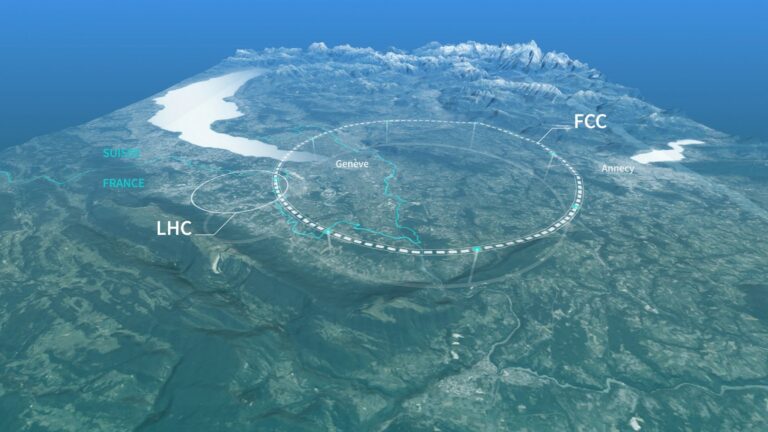CERN is suggesting a particle collider with a budget of $17 billion, which is three times larger than the Large Hadron Collider.
Scientists working at the largest particle accelerator in the world are discussing plans to build an even more massive atom smasher. The $17 billion Future Circular Collider (FCC) would stretch 57 miles (91 kilometers), surpassing the 16. 5 mile (27 kilometer) Large Hadron Collider (LHC) in the European Organization for Nuclear Research (CERN) in Geneva. Scientists want to use the increased size and power of the FCC to probe the outer reaches of the Standard Model
They expect that at such energies (1000 tera electron volts against 1400 of LHC) new particles and forces will be found, and the problems of dark matter and dark energy that make up 95% of the universe will be explained. CERN’s director-general, Fabiola Gianotti said that the FCC will be used as a tool to enhance understanding of the laws of physics and nature and as an inspiration to achieve scientific breakthroughs.
The components might include cryogenics, superconducting magnets, vacuum systems, detectors, and instrumentation that might have potential social and economic impact.
Accelerators such as the LHC bombard protons at nearly the speed of light to look for traces of specific decay particles that could potentially be the signature of new particles or forces. This makes it possible for scientists to explore the different components of the universe, their behavior in a way that is explained in Standard Model of Physics. With the application of this Standard Model, scientists have been able to predict new phenomena which has been actualized in the discovery of the Higgs boson made in LHC in 2012. However, physicists are not content with this and always look forward to making discoveries that may refute it.
Even though it seems to be the most comprehensive of the models proposed so far, the flaws in the Standard Model are vast, and it cannot account for the existence of gravity, composition of dark matter, or why matter prevails over antimatter in the observable universe. For deeper explorations of these frontiers, CERN scientists will then ramp up the power of its FCC, seven times stronger, to accelerate particles even more.
However the detector is currently in an ongoing state of development, nevertheless this work has made a significant amount of headway. The recommendations put out by CERN are from an interims report of the study that will be made for a year. In case the detector plans go ahead, the European Organization for Nuclear Research CERN, a multinational organization consisting of 18 EU member states, Switzerland, Norway, Serbia, Israel and the UK, could raise extra funds for the project from among the other nations.
Even though there is hope that better colliders will help make various breakthroughs, there is also some doubt whether the cost of equipping more efficient colliders will pay off.
“The FCC would be more expensive than both the LHC and LIGO [Laser Interferometer Gravitational-Wave Observatory] combined, and it has less discovery potential,” Sabine Hossenfelder, a theoretical physicist at the Munich Center for Mathematical Philosophy, said on the platform X, previously Twitter. “It would not provide a satisfactory return on investment given current knowledge and technology. There are now greater opportunities to explore than high energy physics.”
Member nations will convene in 2028 to determine whether to approve the project. The initial phase of the machine, which would smash electrons with their opposite counterparts, positrons, would be online in 2045. Finally, in the 2070s, the FCC would start blasting protons into each other.
Do not forget to share your opinion with us to provide you with the best posts !




0 Comments